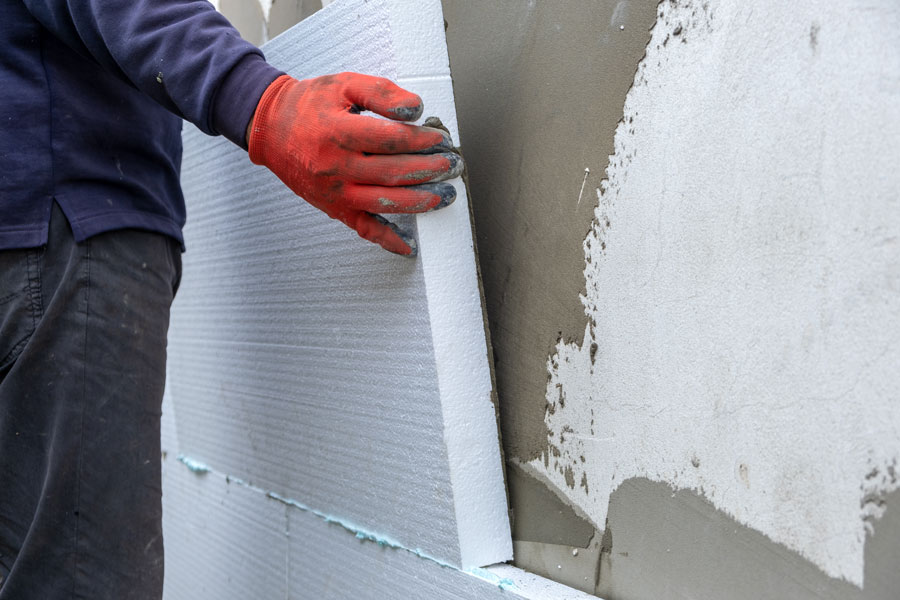Dec 22, 2020
Beyond the Wall Cavity: Why Exterior Insulation is a Must-Have
OX Engineered Products advises homeowners and building owners to install exterior insulation to score lower HERS ratings.
By: OX Engineered Products

As a building owner or homeowner, think about all of the measures you take to ensure your interior environment remains at a consistent, comfortable temperature. When outside temperatures shift, you go into scramble mode – cranking up the heat (or air conditioning) to compensate for Mother Nature’s changing seasons.
This has quickly discernible effects on heating and cooling costs. All you need to do is refer to the utility bill in the heat of the summer or during a deep freeze in January and February.
What if there was a way to keep your interior at the desired temperature for longer periods of time with less reliance on the HVAC system that consistently consumes energy.
That’s where exterior insulation comes in. Using it to its fullest potential is a proactive measure toward building well-insulated, energy-efficient structures, and the benefits go well beyond simply just maintaining a comfortable interior environment.
Thermal Bridging: Eliminated
Thermal bridging occurs when heat is transferred through an uninsulated material such as a wall stud. This occurs in wood and steel frame construction, but especially when builders use steel studs, because steel is approximately 500 times more conductive than wood.
Now that lumber prices have jumped due to shortages caused by the COVID-19 pandemic, there is a significant push by builders to switch to metal studs when framing a structure.
This shift in construction methodology is creating opportunity for exterior insulation manufacturers, because their products are becoming even more essential.
Exterior continuous insulation prevents thermal bridging (and therefore thermal loss) by providing an uninterrupted barrier that is installed outside the studs. Products like OX-IS provide the structural sheathing component as well. With an integrated product like this, builders don’t need to worry about installing the structural sheathing and insulation separately.
This is a huge time- and money-saver.
Moving the Dew Point
Thermal loss is bad news for maintaining a comfortable interior environment. It also negatively impacts overall energy consumption.
Moisture, on the other hand, can wreak all kinds of havoc on the actual structural components.
Continuous insulation is installed outboard of the studs, which moves the dew point from inside the wall cavity to the outer side of the sheathing. As a result, the opportunity for condensation to form within the wall cavity is dramatically reduced. The reason behind this is that continuous insulation creates an environment that significantly decreases the amount of time that the wall cavity temperature can drop below the dew point. The US Department of Energy (DOE) and EPA state that this mitigation of moisture production in walls coupled with the proper air sealing provides a healthier home and defends against potential mold growth.
In addition to decreasing the risk of mold, continuous insulation also defends against structural rot within the wall cavity by reducing moisture buildup. This works to maintain the structural integrity of a building or a home, keeping these structures healthier for longer and preserving the wall system’s lifespan.
Meeting the HERS® Standard
HERS® raters know that continuous insulation combined with a superior air barrier is essential to a low HERS rating.
Previously, constructing a home or other light commercial structure with continuous insulation meant added costs for more labor and materials. In addition, builders were forced to add days to the project timeline to install the multiple components and make several passes around the structure.
Products like OX-IS structural insulated sheathing provide multiple components in one product, including:
- Continuous insulation
- Structural sheathing
- An air barrier
- A water-resistive barrier
All four elements are combined into a single, easy-to-install component.
With product innovations like this, builders can provide continuous insulation while actually reducing labor and material costs. This gives their clients a far more energy-efficient structure. Plus, a lower HERS rating for homeowners increases their home’s value.
The First Step to a High-Performance Structure
Building a high-performing, energy-efficient structure starts from the outside, and continuous insulation is designed to keep the outside elements out.
If the wall system – the first line of defense – can defend against hot/cold air transfer, moisture accumulation, mold growth, and structural rot, your structure is already ahead of the curve.
If the same continuous insulation product can provide the structural component for the envelope as well, delivering a comfortable, energy-efficient building is an even simpler task for construction teams.
This all translates to a more comfortable home, one that maintains its value for the owner for years to come.
To learn more about OX Engineered Products, visit: https://www.oxengineeredproducts.com/
To learn more about how OX products can help to score a lower HERS rating, visit: https://www.oxengineeredproducts.com/hers/
This article was sponsored by OX Engineered Products.





